One of my favorite games from the previous generation that I still look back on very fondly is the 2016 indie hit Oxenfree from Night School Studio. The interactive story followed a group of partying teenagers who stumble upon the ghostly secrets of a haunted island in an Oregonian small town, finding themselves in a battle of wits against interdimensional apparitions. Oxenfree provided a fresh take on the graphic adventure genre through a highly original blend of science fiction/supernatural horror storytelling, well-written characters, and unique dialogue-based gameplay crammed with consequential choices. Although Oxenfree may have received a warm, albeit mixed reception from critics at release, it has since developed into somewhat of a cult classic, selling over 1.5 million copies and maintaining a strong following even to this day. Interestingly, the fandom surrounding Oxenfree has led prices for the game’s rare physical copies to surge upwards of $100, in just one demonstration of the indie’s cult bona fides.
Back to the present day, over seven years after the series began, Oxenfree’s long-awaited follow-up has finally arrived, this time with the streaming giant Netflix as its publisher, as Oxenfree II: Lost Signals officially launched for Nintendo Switch, PC, PS4, and PS5 on July 12, 2023. After numerous playthroughs of Oxenfree II, where I thoroughly delved into Night School’s latest gaming experience on both PS4 and PS5, I found myself both impressed by the latest Oxenfree title, yet also feeling somewhat disappointed by its failure to meet the standard set by the first game I so greatly admire.
A Haunting in Camena
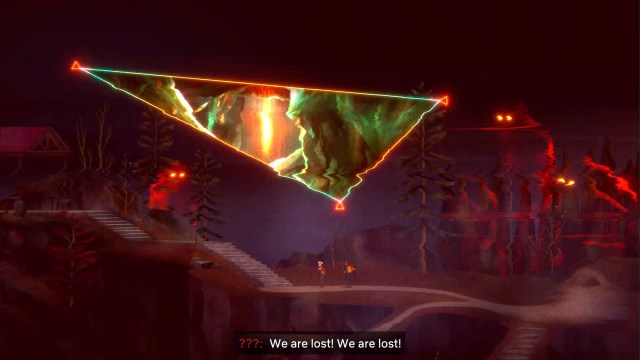
Oxenfree II: Lost Signals puts players in the hiking boots of Riley Poverly, a 30-something former Army dropout who returns to her hometown to take a contract job placing data transmitters for an environmental research group on the coastline of Camena, a small Mountain town in Northern Oregon, notably located across from Edwards Island (where the first game in the series took place). What starts as a routine gig for our heroine and her associate Jacob Summers, a local handyman and Riley’s former Camena High School classmate, quickly devolves into an eerie sci-fi ghost story, when an all-too-familiar triangular portal opens above Edwards Island, unleashing chaos for Lost Signals’ small, yet memorable cast of characters, who must find a way to close the ghostly gate, and stop the enigmatic cultists who opened it.
Oxenfree II is a continuation of the series’ trademark gameplay, as players are tasked with hiking around the sprawling Camena setting, solving mini puzzles, using their trusty radio, and making decisions through Night School’s distinctive dialogue system that gives Riley a trio of branching speech options to choose between when engaging with the game’s NPCs. However, Oxenfree II: Lost Signals opts to further build upon the foundation set by its predecessor through its incorporation of new gameplay concepts including a walkie-talkie system and even some rudimentary time-travel puzzle solving mechanics.
Related: Layers of Fear Review | Sweet Dreams Aren’t Made of This
Olly Olly Oxenfree All Over Again
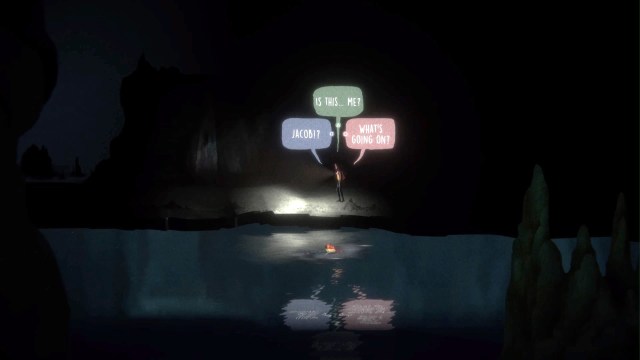
When it comes to storytelling, dialogue, and well-written characters, Night School Studio have set themselves apart as some of the industry’s greatest. It is abundantly clear why Netflix acquired the developer back in 2021, as Night School truly understands the ingredients for story-driven entertainment. Oxenfree II: Lost Signals continues this trend, as the game features interesting, nuanced characters in a superb narrative full of riveting twists and turns. The dialogue of Lost Signals is outstanding, thanks to Night School’s Sorkin-esque ability to turn otherwise average moments into memorable scenes, with monologues that will echo in your soul long after the credits roll. Ultimately, the well-executed exchanges and humorous verbal jousting between the characters of Oxenfree II keep an otherwise minimalist gameplay experience entertaining and fresh.
If Oxenfree was a “coming of age” story, Oxenfree II: Lost Signals is about coming to terms.
Along with its impressive writing, from a technical standpoint, Lost Signals maintains the overarching vibe and art style from the original, while simultaneously creating an updated experience. Oxenfree II is the best of both worlds, providing gamers with a new location to explore, but sustaining the eerie, secluded Northwestern small-town feeling, drenched in a synthy soundtrack. Basically, Lost Signals manages to re-create the atmosphere of Oxenfree without feeling like a carbon copy and supplies a one-of-a-kind experience that can’t be found anywhere else (at least in this dimension).
However, separating itself from the first game in the series, Oxenfree II: Lost Signals takes on a more mature and somber tone in comparison to its 2016 counterpart which heavily utilized comedic elements in its dialogue. While Oxenfree centered on hopeful, partying teens coping with past personal traumas (and supernatural phenomena), Lost Signals places the spotlight primarily on disappointed adults and explores topics of parenthood, aging, and failure to live up to personal expectations. If Oxenfree was a “coming of age” story, Oxenfree II: Lost Signals is about coming to terms.
Related: Ghost Trick Review | I Think It’s Very Vital
Paradox-enfree
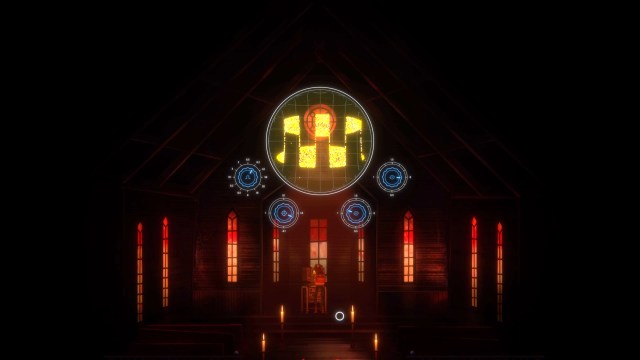
Despite Lost Signals’ storytelling brilliance, this success is unfortunately hindered by some creative decisions that detract from the highly anticipated sequel. Despite the fact that Oxenfree II feels more “next-gen” through its updated mechanics, impressive set pieces, and improved quality-of-life features (i.e. characters talk over each other less), it trails behind the first Oxenfree in many aspects.
For example, Oxenfree II lacks the new game plus mode that was such a vital component of the series’ debut title, which is a glaring, massive disappointment. Furthermore, while the original Oxenfree had an impressive ensemble for its main cast of characters, which aided in making multiple playthroughs feel differentiated, Oxenfree II opts for the duo of Riley and Jacob for virtually its entire duration. Even though the monotony is broken up by sparse encounters with the cultist antagonists, mind-bending flashbacks, as well as a variety of well-written, unseen NPCs, who are only reachable via walkie-talkie, another ensemble cast could have aided in making Lost Signals more replayable. Although the new walkie-talkie gameplay mechanic did manage to create some notable variation between playthroughs, it simply wasn’t enough to keep me from pining for the original Oxenfree character composition.
Lastly, there is an ever-present illusion of choice in Oxenfree II, a noteworthy departure from the series’ first entry, which employed the tactic to a much lesser extent. This isn’t to say there aren’t consequential decisions in Oxenfree II, as there are well-written dilemmas, dialogue variation, and multiple endings, but frustratingly, the sequel has a more linear, pre-planned feeling than the previous chapter in the Oxenfree series. It would be too harsh to call Lost Signals a step backward for the franchise, as there are still plenty of upgrades and newfound enjoyment to be explored in Oxenfree II, but the sequel’s combination of positives and negatives left it feeling more like a lateral progression than the next indie classic.
Oxenfree Legacy
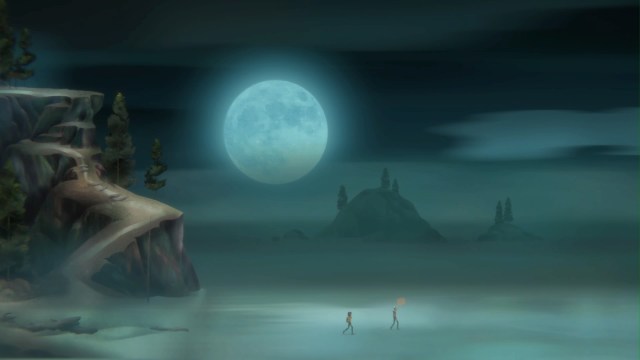
Although it is an undeniable reality that sequels in any medium are beholden to previous entries, Oxenfree II: Lost Signals takes this to a new level due to the oversized influence of its 2016 ancestor. Avoiding spoilers, without experiencing the first Oxenfree you will undeniably find yourself confused by Lost Signals’ convoluted late-game story elements, meaning that enjoyment of Oxenfree II is contingent on playing Oxenfree first.
What’s more, where the series debut gave players a slowly unraveling supernatural mystery, due to its sequel status, Oxenfree II is forced to rely on subverting players’ preconceived notions/expectations instead and doesn’t exactly build on the lore or world as meaningfully as I had hoped it would. Instead of creating new mysteries, Lost Signals mainly re-hashes old ones, ultimately making it feel like this game just might be the finale of the series as a whole.
Pros and Cons
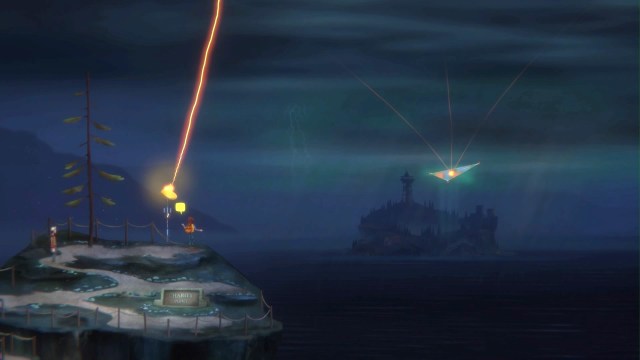
- Pros
- Outstanding dialogue and storytelling
- Well-written characters and unique world
- Excellent musical score
- Cons
- Limited replayability
- Lacks gameplay elements from Oxenfree (2016)
Verdict
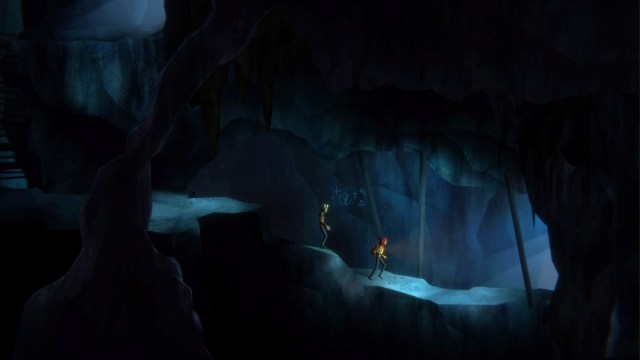
If you loved 2016’s Oxenfree, then Oxenfree II: Lost Signals is definitely worth a playthrough, as the sequel delivers a solid continuation of the story set into motion by the first game, even though it doesn’t quite reach the heights of its predecessor. However, the follow-up is unfortunately of minimal value to series newcomers, who will need to complete Oxenfree prior to the new entry in order to comprehend Lost Signals’ complex story that draws heavily from the first game.
It remains unclear where the Oxenfree franchise is headed following Lost Signals, which surprisingly seems like a closing chapter for Netflix’s newly acquired, unique IP. Regardless, I still find myself excited about the developers’ upcoming projects, whether it might be Oxenfree III (potentially titled Oxenthree?), or any new titles from the storytelling artisans at Night School Studio.
Score: 8.0
A copy of this game was provided to Prima Games for review. Reviewed on PS5.





Published: Jul 12, 2023 03:00 am